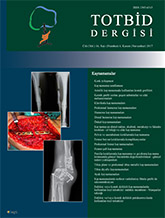
High-energy work and road traffic accidents as well as the increase in tumor rate and metabolic diseases entail an advanced biomedical approach to bone regeneration. In bone tissue loss, which is sometimes difficult to repair, due to application limitations of auto-grafts and allografts, synthetic grafts and substances that replace bone grafts are used alone, or in combination in the clinical field. Although implant integration of synthetic materials is aimed by osteoinduction and coating, with the development of nanotechnological and molecular biological approaches in recent years, osteoinduction is recently aimed. Growth factors constitute the majority of bone graft substitutes. These factors, also called active signal molecules, act by directing the cells to the damaged tissue, proliferating, differentiating and then reconstructing the extracellular matrix by showing dose and time dependent effect. Bone morphogenetic proteins are the most known and most studied of active signaling molecules. These proteins are biologically active molecules that trigger new bone formation. Different biomaterials can be used as carriers to increase the effect of bone substitute substrates, to ensure that they remain in their environment for a long time, and to achieve controlled release. In this review, the materials that can be used instead of bone grafts, the properties they should have, and their use with various carriers have been evaluated for bone remodeling and regeneration.